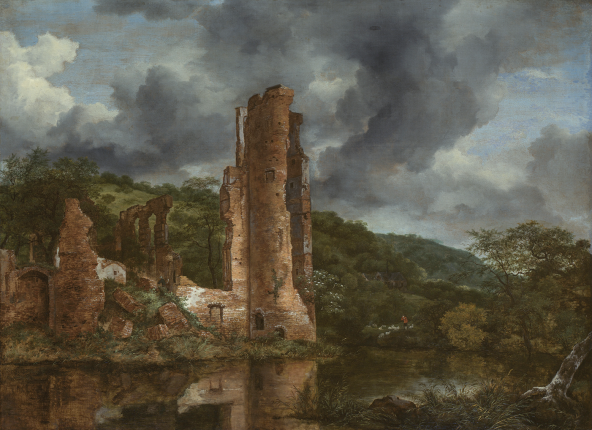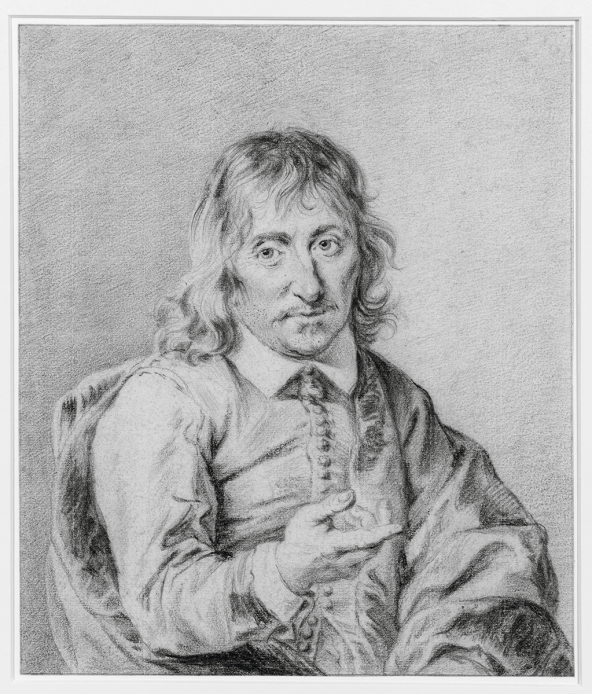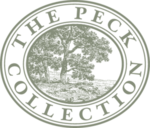Choose a background colour
Jan Lievens, Dutch, 1607-1674: Landscape with Ruins, Possibly Castle Egmond, c. 1650-60
Pen and brown ink on paper; framing lines in brown ink.
11 1⁄2 × 15 1⁄16 in. (29.2 × 38.3 cm)
Verso, at center right, in faded brown ink (in a seventeenth- or eighteenth-century hand), slot te breederoo 3 gulden; and in pencil at lower right, 140.
- Chain Lines:
- Vertical, 24 mm.
- Watermark:
- Foolscap with Seven Bells and countermark PP. Similar to Broos & Schapelhouman 1993, 284, no. 107; Ash & Fletcher 1998, 111, 116, variant C.a.
- Provenance:
H. M. Montauban van Swijndregt, 1841 – 1929, Rotterdam (Lugt 396b); his sale, R. W. P. de Vries, Amsterdam, 5 April 1906, lot 115; sale, R. W. P. de Vries, Amsterdam, 4 March 1930, lot 182; H. C. Valkema Blouw, 1883 – 1953, Bodegraven (Lugt 2505); his sale, F. Muller, Amsterdam, 2 – 4 March 1954, lot 266; Bernard Houthakker, 1884 – 1963, Amsterdam (Lugt 1272, stamp on verso); his sale, Sotheby Mak van Waay, Amsterdam, 17 – 18 November 1975, lot 42; dealer, Theo Laurentius, Voorschoten, 1975; F. W. A. Knight; his sale, Sotheby Mak van Waay, Amsterdam, 29 October 1979, lot 29; Sheldon and Leena Peck, Boston (Lugt 3847); gift to the Ackland Art Museum, inv. no. 2017.1.49.
- Literature/Exhibitions:
Schneider 1932, 218, no. Z.185; Amsterdam 1954, no. 34; Amsterdam 1956, no. 67; J. W. Niemeijer in Amsterdam 1964, no. 52, pl. 20; Schneider & Ekkart 1973, 218, 366, no. Z.185; Sumowski Drawings, vol. 7 (1983), 3872 – 73, no. 1741x ; Van der Wyck & Kloek 1989 – 90, vol. 2, 85 – 86, fi g. 134; F. Robinson in Chapel Hill, Ithaca & Worcester 1999 – 2001, 68 – 69, no. 18; S. Kuretsky in Poughkeepsie, Sarasota & Louisville 2005 – 06, 126 – 27, no. 8; G. Rubinstein in Washington, Milwaukee & Amsterdam 2008 – 09, 263, no. 123.
- Ackland Catalogue:
- 2017.1.49
Depicted from a low viewpoint of a rubble-strewn mound, the exposed interior vaults and standing walls of a building appear monumental beside the background trees. The structure has been tentatively identified as the ruins of Castle Egmond, a medieval castle in North Holland that the Dutch destroyed in 1573 to prevent the Spanish from occupying it during the Dutch Revolt.
Jan Lievens and other artists appreciated the site for its historic and aesthetic values. His fluid and dynamic pen strokes, applied in a variety of tones, endow the drawing with a sense of vitality and brilliance, enlivening an otherwise decaying structure.
This large and commanding sheet demonstrates Jan Lievens’s abilities as a landscape draftsman. Of his approximately 150 known drawings, landscape compositions represent about half of his output. Since he only made about a dozen landscape paintings, he clearly preferred the medium of drawing for this genre.1
Because of their scale and degree of finish, we can assume that he made most of his landscape drawings for the collectors’ market, likely this work as well. None of his landscape drawings relate to his paintings.2
Although the present work is on European paper, Lievens occasionally used special supports such as vellum or Japanese paper for his landscape drawings, underscoring their status as valuable finished works. Rembrandt (1606 – 1669), his brotherly rival when they were young artists in Leiden together in the late 1620s, often did the same from the late 1640s onward in his own prints and drawings.
Lievens’s style is remarkably distinct in these works. In the Peck drawing, his highly fluid and rapidly hatched lines create strong diagonal movement, seen especially in the foliage and in the crumbling walls of the ruin. The ultimate effect endows the composition with a loose dynamism and sense of shimmering vitality. Flemish and Italian artists have been cited as important influences on Lievens’s landscape drawing style, but none come close to his individual way of handling the pen. For this composition, the artist carefully modulated the tone in stages to enhance the sense of perspectival depth in a series of zones from the upper left to the lower right. He used stronger dilutions of ink and added density to the tightly looped undergrowth in the lower right, where he also appears to have made additions in a different, darker ink. The lowered viewpoint lends the composition a tapestry-like effect by reducing the blank areas of the visible sky. This orientation additionally monumentalizes the ruin itself, which is perched on an otherwise humble mound.
The ruins in this drawing have long been assumed to be those of Brederode Castle, but this identification is almost certainly incorrect, as pointed out recently by Wietske Donkersloot.3
Unlike most of the medieval or postmedieval ruins visible in the Netherlands at the time, those of Brederode remain preserved today in much the same state of ruin since the castle’s final destruction in 1573. This makes it a relatively simple matter to compare the image against the site, which reveals no notable points of correspondence. The original link with the castle was based on an early inscription found on the verso, reading slot te breederoo (Castle of Brederode). The mistake is not completely surprising since this ruin was by far the most frequently depicted one in seventeenth-century Dutch art.4
An old inscription on the verso of a drawing by Lievens formerly in the Van Regteren Altena Collection likewise incorrectly identifies the site as Brederode, an inaccuracy caught much earlier in the literature.5
These errors aside, Lievens did depict Brederode on at least one occasion.6
Donkersloot’s supposition that the Peck drawing instead shows the ruins of Castle Egmond has merit.7
Any precise correspondence to this site, however, remains difficult to verify since those ruins have long been cleared down to their foundations.8
Nevertheless, a painting by Jacob van Ruisdael that dates to around the same time reveals some points of similarity Fig. 42.1.9

Jacob van Ruisdael, Landscape with the Ruins of the Castle Egmond, c. 1650 – 53. Oil on canvas, 95 × 125 cm. Chicago, Art Institute of Chicago, inv. no. 1947.475.
Art Institute of Chicago, Potter Palmer Collection
The exposed interior vaults and standing walls are similar to those in Lievens’s drawing, as is the rubble-strewn mound running down to the water. While this proposed identification of the site must remain tentative, we can at least confirm that Lievens was in the Egmond area one or more times from a drawing that depicts the ruins of the nearby Abbey of Egmond, formerly one of the most significant medieval abbeys in the country.10
Both Castle Egmond and the Abbey of Egmond were destroyed by the rebel commander Diederik Sonoy (1529 – 1597) in 1573 to keep them out of Spanish hands during the Dutch Revolt. Like Brederode, both sites were highly appreciated in Lievens’s day for their historical and artistic value. The Counts of Egmond had been among the most powerful in Holland, and the execution of Count Lamoral by the Spanish in 1568 did much to spark the Dutch Revolt in the first place. The sites also provided useful source material for a painter like Ruisdael, who imaginatively incorporated some of the remains of both the castle and abbey in the two versions of his famous Jewish Cemetery. 11
One might reasonably wonder if Lievens made an imaginary pastiche in the studio for the present work as well, whether based upon Egmond Castle or another ruin, but the seemingly specific and complex lowered viewpoint argues for a composition made from an actual site. Whatever the case, Lievens did not commonly feature ruins in his landscape drawings, and this work stands as a high point in his treatment of the subject.
Despite the large number that survive, Lievens’s landscape drawings have proven difficult to date.12
No reliable chronology has been developed based on style due to their relative homogeneity, and few topographical clues have helped the matter.13
By general scholarly consensus, most appear to have been made in the 1650s or 1660s, or at least after Lievens’s return to the Netherlands in 1644, after a decade abroad in London and Antwerp. A potential connection between Lievens and the Egmond area worth noting is that the artist once made a drawn portrait of René Descartes Fig. 42.2.14

Jan Lievens, Portrait of René Descartes, 1644 – 49. Black chalk, 241 × 206 mm. Groningen, Groninger Museum, inv. no. 1931.0173.
Collection Groninger Museum, loan from Municipality of Groningen, donation Hofstede de Groot. Photograph Marten de Leeuw
A compelling thought, though somewhat speculative, is that Lievens was inspired to draw the ruins while visiting the famous French philosopher, who lived in the small village of Egmond aan den Hoef next to the castle ruins (among which he was apparently fond of wandering) in the years 1643 – 49.15
Lievens’s portrait must date between the artist’s return to the country in 1644 and Descartes’s departure for Sweden in 1649. This may be slightly too early for the present sheet, which bears a watermark more suggestive of a date of production in the early 1650s. On the other hand, Sumowski established that Lievens was inclined to make his finished drawings by working in the studio from sketches made earlier on-site.16
Such may be the case here if a visit to Egmond in the late 1640s indeed served as an inspiration for this bold landscape.
End Notes
For overviews of Lievens’s landscape drawings, see Schneider & Ekkart 1973, 73 – 76; Sumowski 1980; Ekkart in Braunschweig 1979, 30 – 31; Sumowski Drawings, vol. 7 (1983), 3710 – 11; and Rubinstein in Washington, Milwaukee & Amsterdam 2008 – 09, 73 – 76. Some further problems are outlined in Royalton-Kisch 1998, 620 – 22.
Donkersloot 2012, 31 – 32.
For a comprehensive study of Brederode as an object of artistic interest, see Donkersloot 2006. For further considerations of its iconography, see Fucci 2018a, 137 – 44.
Sumowski Drawings, vol. 7 (1983), no. 1711x. See also Amsterdam 1988 – 89, no. 62; and the sale catalogue, Christie’s, Amsterdam, 10 December 2014, lot 170 (with Laurens Schoemaker’s suggestion that it might be part of a ruined town wall instead).
Sumowski Drawings, vol. 7 (1983), no. 1742x. This drawing shows the castle ruin just inside the outer bailey (voorburcht).
Donkersloot 2012, 32. Donkersloot’s other suggestion that the ruins might be those of Huis ter Kleef (outside of Haarlem) is less convincing.
See Burger 1988 for a study of the history and architecture of Castle Egmond, including a number of early images of the ruin. For other seventeenth-century views, see also Renaud 1940; and Niemeijer 1959. Roelant Roghman made a number of drawings of the ruins in 1646 – 47, for which see Van der Wyck & Kloek 1989 – 90, vol. 2, nos. 45 – 48; and Plomp 1997, nos. 356 – 58.
For this painting, see Slive 2001, no. 29; and Los Angeles, Philadelphia & London 2005 – 06, no. 18.
Sumowski Drawings, vol. 7 (1983), no. 1722x . See also Amsterdam 1988 – 89, no. 61; and Washington, Milwaukee & Amsterdam 2008 – 09, no. 124. While Schnieder considered this sheet one of Lievens’s best drawings, Ekkart dismissed it as a copy; both Sumowski and Schatborn, however, have reaffirmed it as an authentic original (see the aforementioned literature, with further references). NB: the entry in Washington, Milwaukee & Amsterdam 2008 – 09 (no. 124) erroneously conflates the sites of the castle and the abbey, which were actually located in different areas, the castle next to Egmond aan den Hoef, and the abbey next to Egmond-Binnen. A few other drawings attributed to Lievens depict the Castle Egmond itself, though these are perhaps copies; see Braunschweig 1979, no. 87, with further references.
See Los Angeles, Philadelphia & London 2005 – 06, no. 22.
For the chronology problem, see Sumowski Drawings, vol. 7 (1983), 3710; and G. Rubinstein in Washington, Milwaukee & Amsterdam 2008 – 09, 75 – 76.
For the topographical aids in dating, see Sumowski 1980, 372.
Sumowski Drawings, vol. 7 (1983), no. 1660x. See also Amsterdam 1988 – 89, no. 45; and Washington, Milwaukee & Amsterdam 2008 – 09, no. 112. While some doubts have been expressed in the past about the identity of the sitter, recent scholarship has reaffirmed that the drawing indeed depicts Descartes.
For Descartes’s years in Egmond, see Van den Berg 2014. He had moved there specifically to avoid the public spotlight.
